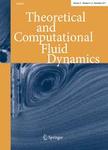版权所有:内蒙古大学图书馆 技术提供:维普资讯• 智图
内蒙古自治区呼和浩特市赛罕区大学西街235号 邮编: 010021

作者机构:Air Force Res Lab Wright Patterson AFB OH 45433 USA
出 版 物:《THEORETICAL AND COMPUTATIONAL FLUID DYNAMICS》 (理论与计算流体动力学)
年 卷 期:2023年第37卷第3期
页 面:289-303页
核心收录:
学科分类:080704[工学-流体机械及工程] 080103[工学-流体力学] 08[工学] 0807[工学-动力工程及工程热物理] 0702[理学-物理学] 0801[工学-力学(可授工学、理学学位)]
主 题:Passive flow control Dynamic stall Transiant sepration
摘 要:A novel passive flow control strategy for the mitigation of transient separation and dynamic stall is demonstrated by means of high-fidelity large-eddy simulations. The control technique is based on a properly-sized micro-cavity cut into a wing s underside near the leading edge, ahead of stagnation. This cavity remains essentially inactive at low incidence. However, as the wing effective angle of attack increases, the stagnation point displaces past the micro-cavity and the accelerating flow grazing the cavity induces a high-frequency resonance phenomenon or so-called Rossiter modes. The self-generated small-scale disturbances are carried around the leading-edge through the boundary layer to the wing s upper side where the laminar separation bubble (LSB) amplifies these disturbances. This process delays LSB bursting and dynamic stall when the cavity size is selected such that its naturally occurring Rossiter modes are tuned to the receptivity of the LSB. Control effectiveness is explored for a harmonically pitching NACA 0012 wing section with freestream Mach number M-infinity = 0.2, chord Reynolds numbers Re-c = 5 x 10(5), and maximum angle of attack of 18 degrees. The flow fields are computed employing a validated overset high-order implicit large-eddy simulation (LES) solver based on sixth-order compact schemes for the spatial derivatives augmented with an eighth-order low-pass filter. Despite its simplicity, the micro-cavity resonance is found to be highly effective in preventing the deep dynamic stall experienced by the baseline airfoil. A significant reduction in the cycle-averaged drag and in the force and moment fluctuations is achieved. In addition, the negative (unstable) net-cycle pitch damping found in the baseline cases is eliminated.